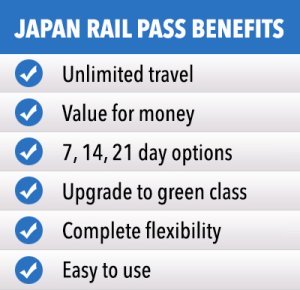Sapporo Travel Guide
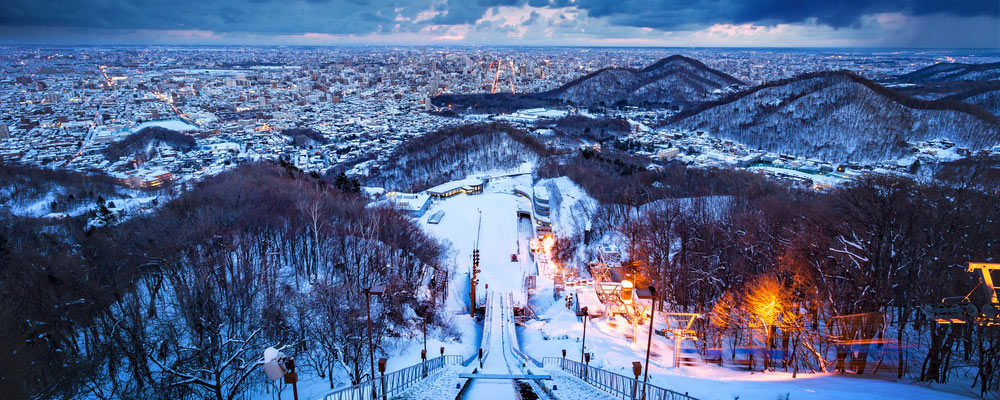
 Overview
Overview
Sapporo is the capital and largest city of Hokkaido Prefecture, and the fifth largest metropolis of Japan. It first gained worldwide recognition for hosting the Olympic Winter Games in 1972 and, today, it is known for its beer, ramen, ski resorts and the annual Sapporo Snow Festival.
 When To Go
When To Go
The best time to go to Tokyo depends on what you want to see and do. All year round, the city has tons of sights to see and activities to take part in.
- Summertime (June – August) in Sapporo welcomes visitors to a climate that is warm but comfortable, as the region is not humid at this time of the year, unlike the rest of the country.
- During the spring (March – May) and autumn seasons (September – November), average temperatures are between 5 and 15 degrees, just right for various outdoor activities such as viewing cherry blossoms and autumn foliage.
- In the winter (December – February), the city experiences very cold days and nights, with heavy snowfall. Temperatures may range from -10 degrees to 5 degrees, and average snowfall is between 100 cm and 200 cm, with snowy days occurring almost the entire season.
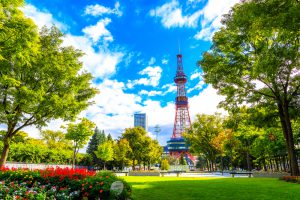
Sapporo
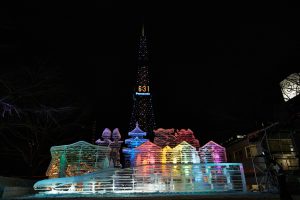
Snow Festival – ©JNTO
 Things To See
Things To See
Attend the Sapporo Snow Festival
Every February, Sapporo holds the Sapporo Yuki Matsuri, or Sapporo Snow Festival, which is one of the most famous and well attended festivals in Japan. First held in 1950, it features different statues and sculptures made from snow and ice, displayed at different sites around the city for one whole week.
Take a Sapporo Beer Museum tour
For beer enthusiasts, taking a tour of the Sapporo Beer Museum is a must as this part of the country is known as the place where Japanese beer originated. First brewed in 1877, Sapporo Beer is one of the first beer brands in Japan and has now found its way to other parts of the globe.
A tour of the museum includes an overview of the history and process of brewing beer, as well as beer tastings. Guests can also enjoy some local cuisine paired with beer at the museum restaurant.
Go Skiing or Snowboarding
In and around Sapporo, there are many ski resorts that have wide, sloping hills with fine, white, powdered snow, perfect for skiing and other snow activities. One of the most notable is the Sapporo Teine Ski Resort, which served as one of the venues of the Winter Olympics in 1972.
Visit the Nijo Market
Sapporo also boasts of a wide array of produce, with homegrown fresh fruits and vegetables being sold at its central market, Nijo Market. From as early as 7 am, shops and stalls in the public market begin to open, with some restaurants offering a breakfast menu of freshly caught seafood, such as salmon eggs and sea urchin on rice, which is known as the uni ikura donburi.
Enjoy the views at the Mt Okura Observatory or JR Tower Observatory T38
Sitting atop a hill that is accessible via a chair lift, the Mt Okura Observatory in Sapporo offers overlooking views of the valley below and the city. The area was the venue for the 90-metre ski jump contests during the 1972 Winter Olympics, and is still used for selected ski jump events up to the current day.
At a height of 160 metres, the JR Tower Observation Deck T38 is an observatory that gives spectacular panoramic views of central Sapporo, Mt Teine, Ishikari Bay and more. Going at night is highly recommended to enjoy the stunning illuminated Sapporo skyline.
Have a picnic at Odori Park
For one week every February, Odori Park is the primary site of the annual Sapporo Snow Festival. It houses a wide variety of snow and ice sculptures that attract over two million tourists from all over the world. The rest of the year, the park offers a great spot to relax and view the cherry blossoms (spring), lush green trees and plants (summer), and gorgeous autumn foliage (autumn).
Hike to the top of Mt Moiwa
Hiking up to the summit of Mt Moiwa is a popular activity for tourists wanting to enjoy fantastic views of Sapporo. The trail winds through a lush forest where you can find beautiful trees and plants, and might run across interesting wildlife. Located in the southwestern part of Sapporo, it provides the best sunset views in the city. It also has ropeway and cablecar facilities for those who are not keen on hiking.
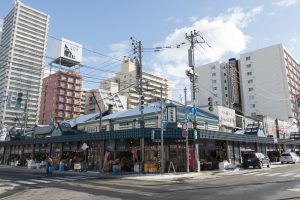
Nijyoichiba – ©JNTO

Cityscape and Odori Park
 Where To Explore
Where To Explore
- Historic Village – With several dozen old, traditional buildings that date back to the Meiji and Taisho Eras, the Historic Village of Hokkaido is an open air museum that shows the history and progress of Hokkaido’s people, culture, architecture and lifestyle from more than 20,000 years ago up to the present.
- Moerenuma Park – A public park on the outskirts of the city, Moerenuma Park consists of vast areas of green hills with numerous man-made structures such as the Hidamari, a pyramid-shaped building; the Sea Fountain; Moere Beach, an artificially-made bathing area; and Mount Moere, a man-made hill that offers fantastic views of the park and its surroundings.
- Susukino – For the ultimate nightlife experience in Sapporo, visit Susukino, a large entertainment hub packed with numerous pachinko parlors, bars, karaoke shops, restaurants and nightclubs. It also has a narrow alley called the Ramen Yokocho, which is home to ramen shops that serve the city’s favorite ramen dish. Every February, it hosts the Sapporo Snow Festival ice sculpture competition.
 Getting Around
Getting Around
Sapporo has a tram line, several buses and three subway lines, providing fast and easy connections between the different attractions in the city. To avoid having to buy a ticket for every ride, visitors can purchase a one-day subway pass for use on all three subway lines, or a prepaid IC card (Kitaca or Sapica) that is valid for all modes of transportation.






